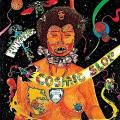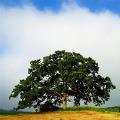
Dreamoar

Posts: 4711 Joined: 10-Sep-2009 Last visit: 18-Dec-2025 Location: Rocky mountain high
|
Shulgin wrote:The giant grass Arundo donax is a tall, perennial reed of a bamboo-like nature. A number of studies have found this plant to be a rich tryptamine source. Almost all the published reports have located these alkaloids in the flowers or in the roots of the plant. The blossoms have both DMT and the 5-methoxylated N-demethylated analogue, 5-MeO-NMT. The roots are a rhizomal system and they not only contain these active tryptamines, but bufotenine as well. The quaternary methylated salt of DMT is in the flowers, and bufotenidine and the cyclic dehydrobufotenidine are in the roots. Another report puts 5-MeO-DMT in all the plant's extracts. - Alexander and Ann Shulgin TIHKAL Chapter 15 I think with the current knowledge and resources at our disposal, we should take another look at Arundo Donax. The literature on this plant seems to be conflicting, but if the claims of DMT and 5-MEO-DMT are correct, it may be a very promising wild source for those living in the southern US. As you can see in the photo above, this stuff grows to be up to 20 ft tall and it tends to grow prolifically, making it very easy to gather up large amounts of biomass. The Entheogen Review shows some interesting links with Sufism, it also shows a couple reports of allergic reaction, so we will want to tread carefully when studying this one. Erowid Arundo Donax Vault
|
|
|
|
|

analytical chemist
   
Posts: 7463 Joined: 21-May-2008 Last visit: 09-Aug-2025 Location: the lab
|
I'll try to help out with this one, since it grows locally. quaternary amine would likely make that derivative inactive due to sterics, so it would be desirable to separate it in the A/B process. i'll attempt as soon as I get a chance, and do analysis on it. "Nothing is true, everything is permitted." ~ hassan i sabbah
"Experiments are the only means of attaining knowledge at our disposal. The rest is poetry, imagination." -Max Planck
|
|
|

You do not have to see alike, feel alike or even think alike in order spiritually to be alike
Posts: 703 Joined: 24-Aug-2011 Last visit: 10-Jul-2014 Location: USA
|
I have maybe 20 30 pounds of root in my closet. Just not sure how to go about it. Toadfreak!
Travel like a king
Listen to the inner voice
A higher wisdom is at work for you
Conquering the stumbling blocks come easier
When the conqueror is in tune with the infinite
Every ending is a new beginning
Life is an endless unfoldment
Change your mind, and you change your relation to time
Free your mind and the rest will follow
|
|
|

analytical chemist
   
Posts: 7463 Joined: 21-May-2008 Last visit: 09-Aug-2025 Location: the lab
|
the approach is similar, except you add a defat step, and some sort of separation. i have solvent partition in mind, for people who don't have a column. acidify to pH 4, add naphtha to defat (keep the acidic layer), basify, extract with naphtha. bufotenidine should be separated out in the basification, @ ~pH 13, because it will have a net charge of -1, and would remain in the aqueous phase. gramine would still be extracted, and that's where solvent partition comes into play "Nothing is true, everything is permitted." ~ hassan i sabbah
"Experiments are the only means of attaining knowledge at our disposal. The rest is poetry, imagination." -Max Planck
|
|
|

DMT-Nexus member

Posts: 14191 Joined: 19-Feb-2008 Last visit: 22-Nov-2025 Location: Jungle
|
Published analysis reports:1 - Ghosal et al 1971 Alkaloids of the flowers of Arundo donaxFlowers: 0.2% total alkaloids 0.096% - Gramine methohydroxide (significant peaks at m/e 174, 130, 116, 102, 44)0.048% - Gramine 0.032% - 3,3’-Bisindolylmethyl dimethylammonium hydroxide (UV tmax 217, 270,279,287 nm, significant peaks at m/e 174, 130, 102, 58, 44 )0.0012% DMT methohydroxide (Not stated) - DMT (Not stated) - Bufotenine (not stated) - 5-MeO-NMT 0.0036% - Uncharacterized quaternary indolic bases 0.00048% - Eleagnine (m/e 186 (M+), significant peaks at m/e 157, 142, 102) Uncharacterized quaternary indolic bases Quote:Gramine content, in the flowers remained constant up to first 2 weeks after their appearance, then it started declining and after about 1 month the tertiary base was almost entirely replaced by a mixture of the quaternary amine and the his-compound. These observations indicate that a quaternary gramine compound, rather than a tert-amine oxide,’ could be a plausible precursor of the metabolites of gramine in higher plants. (btw benz, excelent you are going for it  )
|
|
|

analytical chemist
   
Posts: 7463 Joined: 21-May-2008 Last visit: 09-Aug-2025 Location: the lab
|
yea, the flowers are pretty worthless. it's the rhizomes that carry the highest concentration of alkaloids. "Nothing is true, everything is permitted." ~ hassan i sabbah
"Experiments are the only means of attaining knowledge at our disposal. The rest is poetry, imagination." -Max Planck
|
|
|

DMT-Nexus member

Posts: 14191 Joined: 19-Feb-2008 Last visit: 22-Nov-2025 Location: Jungle
|
2- Ghosal et al 1969 Arundo donax L. (Graminae). Phytochemical and Pharmacological EvaluationRhizomes From 700g rhizomes (from india) 0.04 g - DMT 0.016 g - 5-MeO-NMT 0.18 g - Bufotenine 2.3 g - Bufotenidine 0.44 g - Dehydrobufotenine
3- TLC assays by Appleseed and Trout (ref. Trout's notes)Quote: Despite Ghosal isolating DMT from the rhizome of this species (in India), Appleseed found it to be lacking from almost all samples examined (all US material). These came from multiple sources in several different states and included seasonal samplings. Despite numerous TLC assays of this plant we (Appleseed & Trout) observed DMT only once. This was with young, skinny, white, feathery roots (> 2 mm dia.) that were growing under the container on a root-bound specimen growing in a shallow tray of soil during late winter in Austin, Texas. Said container was growing on top of a piece of plywood and the roots were in between the plywood and the plastic container. DMT was accompanied by multiple Ehrlich reactive bands.
We repeatedly observed numerous indolic alkaloids (in rhizome & growing shoots) but, with this one exception, no DMT. As was also the case with variegated Phalaris, variegated Arundo donax showed no detectable alkaloid when looked at by Appleseed using TLC
|
|
|

analytical chemist
   
Posts: 7463 Joined: 21-May-2008 Last visit: 09-Aug-2025 Location: the lab
|
I'll have to hit up some local rivers. the extraction on a lb. of leaves didn't yield much of anything either, probably mostly gramine anyway "Nothing is true, everything is permitted." ~ hassan i sabbah
"Experiments are the only means of attaining knowledge at our disposal. The rest is poetry, imagination." -Max Planck
|
|
|
DMT-Nexus member

Posts: 4639 Joined: 16-May-2008 Last visit: 24-Dec-2012 Location: A speck of dust in endless space, like everyone else.
|
|
|
|

analytical chemist
   
Posts: 7463 Joined: 21-May-2008 Last visit: 09-Aug-2025 Location: the lab
|
zwitterionic, quaternary-amine (three methyls) derivative of bufotenine. http://isomerdesign.com/...hp?domain=tk&id=5192"Nothing is true, everything is permitted." ~ hassan i sabbah
"Experiments are the only means of attaining knowledge at our disposal. The rest is poetry, imagination." -Max Planck
|
|
|
DMT-Nexus member

Posts: 4639 Joined: 16-May-2008 Last visit: 24-Dec-2012 Location: A speck of dust in endless space, like everyone else.
|
Interesting. Especially as this compound seems to be the most prominent one in arundo donax. There´s 5 times as much of this bufotenidine present than the second substance, wich is also a bufotenin derivate. From what i understand, bufotenin is usually not taken orally because, as in a salt-form it has trouble passing the brain-blood barrier. So i guess that a zwitterion would probably not have this problem. So arundo donax could be taken orally without harmala´s and would probably produce very strong, bufotenin like effects then?
|
|
|

DMT-Nexus member

Posts: 14191 Joined: 19-Feb-2008 Last visit: 22-Nov-2025 Location: Jungle
|
I would NOT consume arundo donax orally at this point, I would extract it and be sure it has what I want before trying it. From Christian Raetch's encyclopedia: Quote:[The reports about the effects of an ayahuasca analog made with arundo donax are not very promising and do not encourage others to experiment: For example, I once ingested one gram of Peganum harmala extract with 50 mg of an arundo donax extraction. There was no psychoactivity at all, but I did suffer a modest allergic reaction. Within an hour I noticed that my vision was impaired—there was some difficulty in focusing on the print in a magazine. Later, my eyes felt watery and slightly swollen. The next day, I had a medium conjunctivitis with occasional hives appearing on my body." Also the paper linked in my previous post with the rhizome research has the result many pharmacological tests in animals of bufotenidine, but I have no idea how to extrapolate from this data if we can have any clues on possible effects / risks to humans. It mentions Arundo is used in traditional ayurvedic practices, saying a decoction from the roots is supposed to be "emollient, diuretic, is said to stimulate menstrual discharge and to diminish the secretion of milk" . There is no mention of dosages or so on...
|
|
|
DMT-Nexus member

Posts: 4639 Joined: 16-May-2008 Last visit: 24-Dec-2012 Location: A speck of dust in endless space, like everyone else.
|
Yeah, i just googled it and i could find nothing 'positive' about it. whenever it´s mentioned, it´s always refered to as a toxin. Too bad, it sounded interesting.
|
|
|

analytical chemist
   
Posts: 7463 Joined: 21-May-2008 Last visit: 09-Aug-2025 Location: the lab
|
polytrip wrote:Interesting. Especially as this compound seems to be the most prominent one in arundo donax. There´s 5 times as much of this bufotenidine present than the second substance, wich is also a bufotenin derivate. From what i understand, bufotenin is usually not taken orally because, as in a salt-form it has trouble passing the brain-blood barrier. So i guess that a zwitterion would probably not have this problem. i So arundo donax could be taken orally without harmala´s and would probably produce very strong, bufotenin like effects then? actually because of its charged groups, it would not cross the bbb . lipophilic molecules pass the bbb. this one may have an inhibitory effect on various 5ht receptors in the gut "Nothing is true, everything is permitted." ~ hassan i sabbah
"Experiments are the only means of attaining knowledge at our disposal. The rest is poetry, imagination." -Max Planck
|
|
|

DMT-Nexus member

Posts: 14191 Joined: 19-Feb-2008 Last visit: 22-Nov-2025 Location: Jungle
|
4- Chauduri & Ghosal 1970. Triterpenes and sterols of the leaves of Arundo donax.Appart from alkaloidal content in different parts of the plant, leaves also contain the following triterpenes and sterols (all soluble in petroleum ether/naphtha): Triacontane (Major component of C30-C32n-Alkanes (M+, m/e450,436,422) Triacontanol (m/e 420 (M-18 ), 392) α -Amyrin acetate ( m/e 468 (M+), significant peaks at m/e 453,408,393,218,203,199 ). Alkali hydrolysis to α -Amyrin β-Amyrin acetate.(m/e 468 (M+), significant peaks at m/e 453, 408, 393, 218, 203, 199): alkali hydrolysis to β-amyrin, Friedelin (m/e 426 (M+), significant peaks at m/e 341,302,273.) Stigmasterol. (m/e 412 (M+)) β-Sitosterol. (m/e 414 (M+))Campesterol. (m/e 400 (M+) )5- Indian Medicinal Plants 2007 Springer Ayurvedic Names: Nala, Potgala, Shuunya-madhya, Dhamana. Siddha/Tamil Names: Korukkai. Action: Rhizome—sudorific, emollient, diuretic, antilactant, antidropsical; uterine stimulant (stimulates menstrual discharge), hypotensive. Dosage: 50-100 ml root decoction. (CCRAS*) (No mention of how concentrated or from how many grams root) * Source cited in document: Central Council for Research in Ayurveda and Siddha, New Delhi 6-Plants for a future: Arundo donaxOther medicinal use: A paste of the root is applied to the forehead to treat headaches[272]. Boiled in wine with honey, the root or rhizome has been used for treating cancer[269] Edible uses: Edible Parts: Leaves; Root. Edible Uses: Rhizome - raw or cooked[84]. The rhizome can be dried and ground into a powder to make bread, usually in conjunction with cereal flours[7, K]. It can also be roasted or boiled[84]. Leaves - cooked as a potherb[84]. They are very bitter[177]. The young shoots are used[177]. Other usesBrooms can be made for terminal panickles; Plants are grown alongside irrigation canals to check soil erosion; The plant can be grown as a windbreak screen; If cut down, the culms branch and in this form the plants can be used as a hedge; The leaves can be woven into mats etc, whilst the split and flattened stems are used to make screens, walls of houses etc; A yellow dye is obtained from the pollen; The stems of the plant have a multitude of applications. They are used as plant supports for vines and other climbing plants; and to make clarinets, bag-pipes etc; They are also used as pipe stems, for roofing, to make screens, walking sticks and in basketry; They are used to make the reeds of clarinets and organ pipes; The stems can be harvested as desired at any time of the year; The fibre from the stems can be used to make a good quality paper; This plant is currently (1995) under investigation at Rosewarne in Cornwall as a potential commercial paper crop for small-scale industries in SW. England[K]; Because of rather high yields from natural stands, the plant has been suggested as a source of biomass for energy production;. Dry cane yields of ca 10, 15, and 20 tonnes per hectare were reported respectively from infertile, partly fertile and fertile soils; According to the phytomass files annual productivity ranges from 10 to 59 tonnes per hectare; A particular type of cellulose is obtained from the plant; In Italy, the plant is used in the manufacture of rayon; Arundo donax might also serve to clean soil contaminated with heavy metals Cultivation and propagation details also in this linked page. Sources cited in page: [K] Ken Fern Notes from observations, tasting etc at Plants For A Future and on field trips. [7]Chiej. R. Encyclopaedia of Medicinal Plants. [84]Coyle. J. and Roberts. N. C. A Field Guide to the Common and Interesting Plants of Baja California. [177]Kunkel. G. Plants for Human Consumption. [269]Duke. J. Handbook of Energy Crops [272]Manandhar. N. P. Plants and People of Nepal
|
|
|

DMT-Nexus member
Posts: 163 Joined: 18-Jul-2011 Last visit: 02-Apr-2024
|
endlessness, that quote you gave from Raetsch's encyclopaedia is actually from Jim DeKorne's Psychedelic Shamanism, I believe. Trout is a great guy who's done great, honest, critical research and review work, publishing out of his own pocket, and many people have found his stuff to be very useful and reliable. His integrity is without doubt to those who know him. If his books and booklets are too obscure for a reader, then they're not the kind of thing that reader is looking for or is capable of comprehending the value of. Trout's stuff is there for the people who want it, not to get on the bestsellers list. If you want something more approachable, there are nice looking books out there with lots of colour photos and digestible chunks of text, but don't expect as high a degree of comprehensive, accurate and detailed information. And no, I'm not getting paid to say this! 
|
|
|
DMT-Nexus member
Posts: 3 Joined: 18-Aug-2012 Last visit: 20-Sep-2012
|
I am interested in performing extractions on Arundo donax as it grows pretty much everywhere in my tiny island of hills and valleys. A few weeks ago I stripped down a few plants from a fertile valley area and performed a straight-to-base extraction on about 300g of the leaves. This being my first attempt at the extraction I made quite a few mistakes, the first one being my choice of method of extraction. I used a lamp-oil hydrocarbon mixture (Bartoline) instead of pure naphtha, which must have caused a lot of impurities to be introduced to the final product (even though I performed a Na2C03 wash). I filtered the final naphtha extract through filter paper which was a mistake as I did not manage to get anything from the filter paper, and now I'm letting the filtrate to evaporate in a glass dish. I barely see any residue in this dish. Long story short I did not manage to get any product, but I will attempt another time using a A/B extraction process and this time performing it on the Rhizome. If anyone can help by showing me which chemicals would work best to extract the alkaloids found in the Rhizome and which process would work most efficiently it would be greatly appreciated. 
|
|
|

JC
Posts: 1183 Joined: 18-Jan-2008 Last visit: 12-May-2024 Location: Scotland
|
Hey sorry to bump an old thread, better here a new one I think, but this recently came to my attention, obviously not looking good but still wondering did you ever do any more work with this benzyme? or anyone else?? cheers
|
|
|

DMT-Nexus member
Posts: 3 Joined: 20-Oct-2014 Last visit: 29-Aug-2017 Location: GarGa
|
|
|
|

DMT-Nexus member
 
Posts: 372 Joined: 29-Sep-2009 Last visit: 15-Feb-2024 Location: Diagonally parked in a parallel universe
|
I attempted to work up this plant back in the '90s. I didn't keep notes on the particular procedure I used or the yield but it was so low and the roots difficult to work with that I abandoned pursuing it as a viable DMT source plant. I already asked Alice.
|